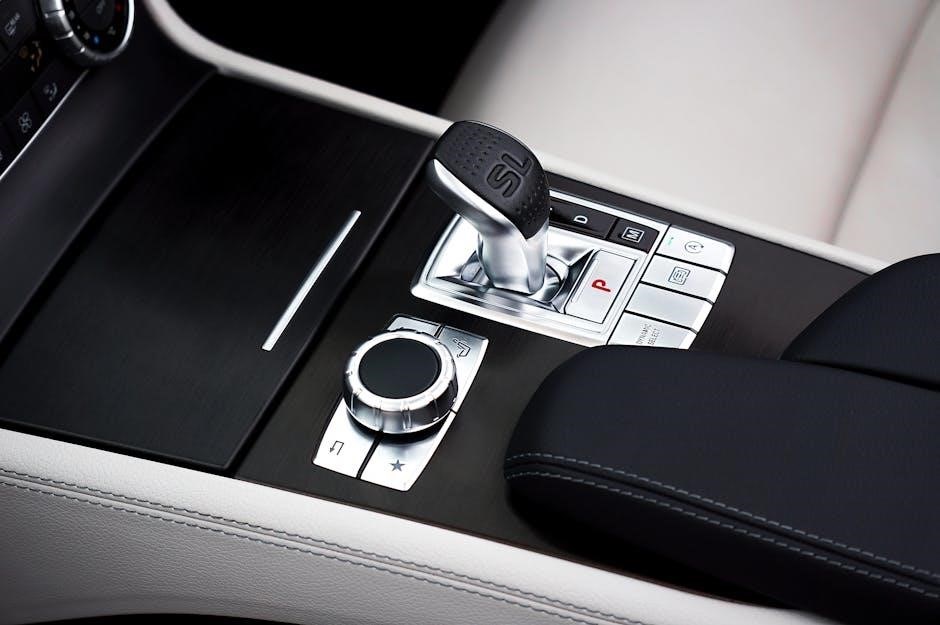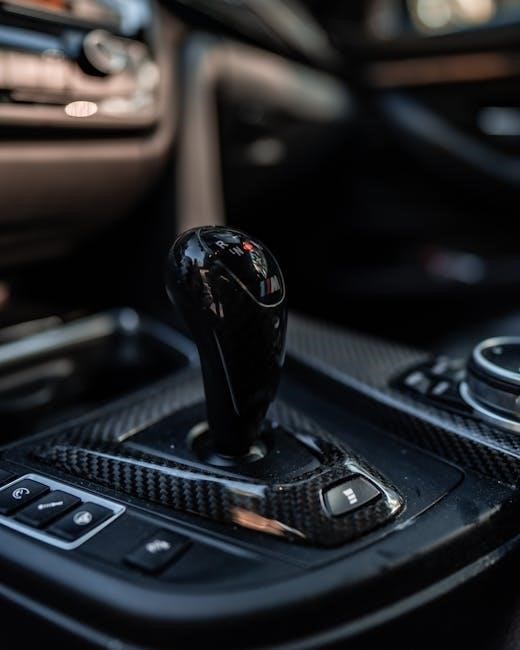The Cuisinart Ice Cream Maker efficiently crafts homemade ice cream, sorbet, and frozen yogurt. Its ease of use and multiple models make it ideal for all users.
Why Use a Cuisinart Ice Cream Maker?
The Cuisinart Ice Cream Maker is a versatile and efficient kitchen appliance that allows you to create homemade ice cream, sorbet, and frozen yogurt with ease. It stands out for its ability to produce creamy, professional-quality desserts in just 20-40 minutes. Unlike store-bought options, it lets you customize flavors and ingredients, ensuring freshness and reducing additives. Its compact design and easy-to-use interface make it perfect for both beginners and experienced users. Additionally, the machine is cost-effective and eco-friendly compared to buying ice cream regularly. With minimal cleanup and durable construction, it’s a practical addition to any home kitchen, offering endless possibilities for dessert creation.

Key Features of the Cuisinart Ice Cream Maker
The Cuisinart Ice Cream Maker is equipped with a frozen bowl that ensures quick and even churning, resulting in creamy textures. It features an automatic churning mechanism, allowing hands-free operation. The machine is designed with a user-friendly interface, making it easy to operate for all skill levels. Multiple models are available, including compact and compressor-based options, to suit various needs. The maker supports customizable flavors, enabling users to create unique and tailored desserts. Its fast processing time of 20-40 minutes ensures quick results. Additionally, the appliance is easy to clean and maintain, enhancing its practicality for regular use.

Understanding Your Cuisinart Ice Cream Maker
The Cuisinart Ice Cream Maker simplifies homemade frozen treats with its automatic churning and frozen bowl. Compact, easy, and versatile for ice cream, sorbet, and more.
Parts and Components of the Cuisinart Ice Cream Maker
The Cuisinart Ice Cream Maker consists of a freezer bowl that pre-chills the mixture, a churn blade for mixing, and a lid with an ingredient spout. The control panel offers simple operation, while the base houses the motor; Some models include a timer and multiple paddles for ice cream or gelato. Additional accessories like extra freezer bowls and recipe booklets may be included. These components work together to ensure smooth, efficient churning, producing creamy homemade ice cream, sorbet, or frozen yogurt. Understanding each part helps in troubleshooting and maintaining the appliance effectively.
How the Cuisinart Ice Cream Maker Works
The Cuisinart Ice Cream Maker operates by churning a pre-chilled mixture in its freezer bowl. The motorized base powers a churn blade, which agitates the mixture, incorporating air and breaking down ice crystals for a smooth texture. Simply pour the prepared mixture into the bowl, turn on the machine, and let it churn. The process typically takes 20-40 minutes, depending on the mixture’s volume and consistency. The result is creamy, homemade ice cream or frozen dessert, ready to enjoy. This straightforward process makes crafting custom flavors easy and efficient for users of all skill levels.

Different Models of Cuisinart Ice Cream Makers
Cuisinart offers a variety of ice cream maker models, each designed to suit different needs and preferences. The ICE-21C is a compact, 1.4-liter model ideal for small batches, while the ICE-45 and ICE-48 are popular for their ease of use and versatility. The ICE-100 is a premium option with a built-in compressor, eliminating the need for pre-freezing the bowl. These models vary in features like churn time, capacity, and additional functions such as gelato-making capabilities. Whether you’re a casual user or an avid dessert creator, Cuisinart provides options to match your lifestyle and dessert-making goals.

Setting Up Your Cuisinart Ice Cream Maker
Setting up your Cuisinart Ice Cream Maker involves unpacking, washing, and prepping the machine; Ensure the freezer bowl is frozen beforehand for optimal performance.
Unpacking and Preparing the Machine
Unpack your Cuisinart Ice Cream Maker carefully, ensuring all components, such as the base, freezer bowl, lid, and paddle, are included. Wash all parts with warm, soapy water and dry thoroughly before first use. The freezer bowl must be pre-frozen for at least 6-8 hours to ensure proper churning. Place the bowl in the freezer, avoiding any contact with moisture. Once frozen, remove the bowl and attach it to the base securely. Ensure the lid is properly aligned and clicked into place. Preparing the machine correctly is essential for smooth operation and optimal ice cream texture. Always follow the manufacturer’s guidelines for best results.
Freezing the Bowl: A Crucial First Step
Freezing the bowl is essential for your Cuisinart Ice Cream Maker to function properly. Place the freezer bowl in the freezer for at least 6-8 hours or overnight to ensure it reaches the necessary temperature. Avoid exposing the bowl to moisture, as this can hinder performance. Once frozen, remove the bowl and attach it to the base securely. Note that some models, like those with built-in compressors, do not require pre-freezing. Always store the bowl in a freezer-safe bag to maintain dryness. Proper freezing ensures smooth churning and prevents leakage, guaranteeing the best results for your homemade ice cream.
Initial Setup and Calibration
Begin by unpacking and washing all components thoroughly. Assemble the machine by aligning the freezer bowl with the base and securing it firmly. Plug in the appliance and ensure it is placed on a stable, flat surface. Refer to the manual for specific model instructions, as some may require additional steps. Before first use, familiarize yourself with the control panel and settings. For models with a timer, ensure it is set to the default position. Once assembled, double-check that all parts are correctly aligned and the lid is securely closed. Follow the manual’s calibration guide, if applicable, to ensure optimal performance. Proper initial setup guarantees smooth operation and delicious results.

Using Your Cuisinart Ice Cream Maker
Pour your chilled mixture into the freezer bowl, turn on the machine, and let it churn until thick and creamy. Add ingredients through the lid opening for mix-ins.
Preparing the Ice Cream Mixture
To create delicious homemade ice cream, start by preparing your mixture. Combine heavy cream, sugar, and your desired flavorings, such as vanilla extract or cocoa powder, in a bowl. For unique twists, add ingredients like fresh fruit, nuts, or chocolate chips. Ensure all ingredients are well-mixed and chilled in the refrigerator for at least 1-2 hours before churning. This step is crucial for achieving a smooth, even texture. If making sorbet or frozen yogurt, adjust the ingredients accordingly, using fruit purees or yogurt bases. Always follow the recipe proportions to ensure proper churning performance in your Cuisinart Ice Cream Maker.
Churning Your Ice Cream
Pour your chilled mixture into the Cuisinart Ice Cream Maker’s frozen bowl. Turn on the machine and let it churn for 15-20 minutes, or until the mixture becomes thick and creamy. The machine’s paddle will mix and aerate the ingredients, creating a smooth texture. During churning, the mixture will expand and develop its consistency. If using add-ins like chocolate chips or nuts, add them in the last 2 minutes of churning. Once done, transfer the ice cream to an airtight container and freeze for 2 hours to firm up. This step ensures your homemade ice cream is perfectly textured and ready to enjoy;
Mixing in Add-Ins and Flavorings
Add-ins like nuts, chocolate chips, or fruit can be mixed into your ice cream during the last 2 minutes of churning. Pour them through the spout or opening in the lid to ensure even distribution. For chunky mix-ins, fold them into the finished ice cream with a spatula. Flavorings like extracts or sauces can be stirred in before or after churning, depending on desired intensity. Be careful not to overfill, as this may disrupt the machine’s operation. This step allows for endless customization, making each batch uniquely delicious and tailored to your taste preferences.

Troubleshooting Common Issues
Identify and resolve issues like ice cream not churning, frozen bowls, or overfilled mixtures by checking bowl preparation, ingredient proportions, and machine guidelines for optimal results.
Why Your Ice Cream Isn’t Churning Properly
If your ice cream isn’t churning properly, it could be due to inadequate freezer bowl preparation or overfilling the machine. The bowl must be frozen for 6-8 hours to ensure proper churning. Overfilling prevents the mixture from expanding, hindering the churning process. Additionally, using too much liquid or incorrect ingredient ratios can disrupt consistency. Ensure the bowl is pre-frozen, ingredients are chilled, and mixtures are within capacity limits. Improper assembly or malfunctioning parts may also cause issues. Always follow the manufacturer’s guidelines for optimal performance and troubleshooting common problems effectively.
Solving Frozen Bowl Issues
The frozen bowl is essential for churning ice cream. If it’s not working, ensure it’s fully frozen (6-8 hours). Avoid rushing this step, as an improperly frozen bowl won’t churn. If the bowl is overfilled, mixture can spill, preventing even freezing. Always pour chilled mixtures to maintain temperature. If the bowl isn’t sealing properly, check for cracks or misalignment. Never use hot water to defrost, as it can damage the bowl. Store the bowl flat in the freezer to prevent uneven freezing. For persistent issues, consult the manual or contact support. Proper bowl care ensures smooth, creamy results every time.
Addressing Overfilled Mixtures
If your mixture overflows during churning, stop the machine immediately to avoid damage. Pour excess mixture into a separate container and refrigerate until ready to churn again. Overfilling can prevent the lid from sealing properly, leading to inconsistent results. Always measure ingredients accurately and leave about 1-2 inches of space in the bowl. For best results, chill the mixture thoroughly before churning. If the mixture is too runny, it may expand during freezing, so portion control is key. Regularly check the mixture’s consistency during churning to ensure a smooth process. Proper portioning ensures creamy, evenly textured ice cream every time.

Maintenance and Cleaning
Regularly clean the Cuisinart Ice Cream Maker with warm, soapy water. Dry thoroughly to prevent rust. Store the bowl in the freezer when not in use.
Cleaning the Machine After Use
Clean your Cuisinart Ice Cream Maker immediately after use to prevent residue buildup. Wash the mixing bowl, lid, and paddle with warm, soapy water using a soft sponge. Avoid abrasive cleaners to protect the finish. Dry thoroughly with a clean towel to prevent rust. For tough residue, soak parts in warm water before cleaning. The freezer bowl should not be dishwasher-safe; hand-wash only. Regular cleaning ensures optimal performance and longevity of your machine. Store components in a dry place or in the freezer for the bowl to maintain readiness for future use. Proper maintenance keeps your ice cream maker in great condition.
Storing the Cuisinart Ice Cream Maker
After cleaning, store the Cuisinart Ice Cream Maker in a dry, cool place to maintain its performance. Place the freezer bowl in the freezer if you plan to use it soon, or store it separately if not. Other components, like the lid and paddle, can be kept in a dry location. Avoid exposing the machine to extreme temperatures or humidity. For models with a built-in compressor, ensure the unit is stored upright to prevent damage. Regularly check stored parts for dust or moisture before reuse. Proper storage extends the lifespan of your ice cream maker and ensures it remains ready for future use.

Advanced Tips and Tricks
Experiment with unique flavors like matcha or lavender. For creamier results, chill ingredients thoroughly. Try layering mix-ins during churning for a swirl effect in your ice cream.
Creating Unique and Custom Flavors
Unleash your creativity by crafting one-of-a-kind ice cream flavors with your Cuisinart Ice Cream Maker. Start with a base mixture of cream, sugar, and milk, then infuse unique ingredients like fresh berries, cocoa powder, or even liqueurs. For a tropical twist, blend in pineapple and coconut milk. To create a decadent dessert, mix in crushed cookies or caramel sauce during the churning process. Experiment with herbs and spices, such as mint or cinnamon, for distinctive flavor profiles. The flexibility of the Cuisinart allows you to tailor each batch to your taste, ensuring every scoop is a personalized delight.

Optimizing Churn Time for Creamier Ice Cream
Achieve creamier ice cream by perfecting the churn time with your Cuisinart Ice Cream Maker. Start with a chilled mixture to ensure faster freezing and a smoother texture. Avoid overfilling the bowl, as this can disrupt the churning process. For optimal results, churn for 15-20 minutes, depending on the mixture’s volume and recipe. Adding mix-ins like nuts or fruit halfway through churning ensures even distribution. Stop the machine once the ice cream reaches your desired consistency to prevent over-churning, which can lead to a denser texture. By adhering to these guidelines, you’ll enjoy a richer, creamier homemade ice cream every time.
Using Alternative Ingredients
Experiment with alternative ingredients to create unique and healthier ice cream options using your Cuisinart Ice Cream Maker. For dairy-free versions, try using almond milk, coconut milk, or cashew cream as substitutes for traditional cream. Natural sweeteners like honey, maple syrup, or dates can replace refined sugars. Vegan-friendly flavorings, such as cocoa powder for chocolate or matcha for green tea, add variety. Blend ingredients thoroughly before churning and chill the mixture to ensure the best texture. These alternatives allow you to cater to dietary preferences while maintaining creamy, delicious results. Feel free to innovate and combine flavors for one-of-a-kind creations!
The Cuisinart Ice Cream Maker simplifies crafting homemade frozen treats, offering versatility and ease; From classic flavors to unique creations, it empowers users to experiment and enjoy endless possibilities.
Final Thoughts on Using the Cuisinart Ice Cream Maker
The Cuisinart Ice Cream Maker is a versatile and efficient kitchen appliance that empowers users to create a wide variety of frozen treats. Whether you’re a beginner or an experienced dessert enthusiast, this machine simplifies the process of making ice cream, sorbet, and frozen yogurt. With its user-friendly design and quick churning time, it allows for endless creativity in crafting unique flavors. The ability to customize ingredients and experiment with different recipes makes it a valuable addition to any kitchen. By following the provided instructions and tips, users can consistently produce delicious, creamy results that rival store-bought options. Embrace the joy of homemade desserts with the Cuisinart Ice Cream Maker and unlock a world of flavorful possibilities.
Encouragement to Experiment and Create
Embrace the freedom to experiment with your Cuisinart Ice Cream Maker! This versatile appliance invites creativity, allowing you to craft unique flavors and personalized treats. From classic vanilla to bold, innovative combinations, the possibilities are endless. Don’t hesitate to try new ingredients, mix-ins, or even dairy-free alternatives to suit your preferences. The ease of use and quick results make it a joy to explore different recipes and techniques. Let your imagination run wild and create desserts that reflect your taste and style. With every churn, you’ll discover the satisfaction of making something truly special and delicious right in your own kitchen.















